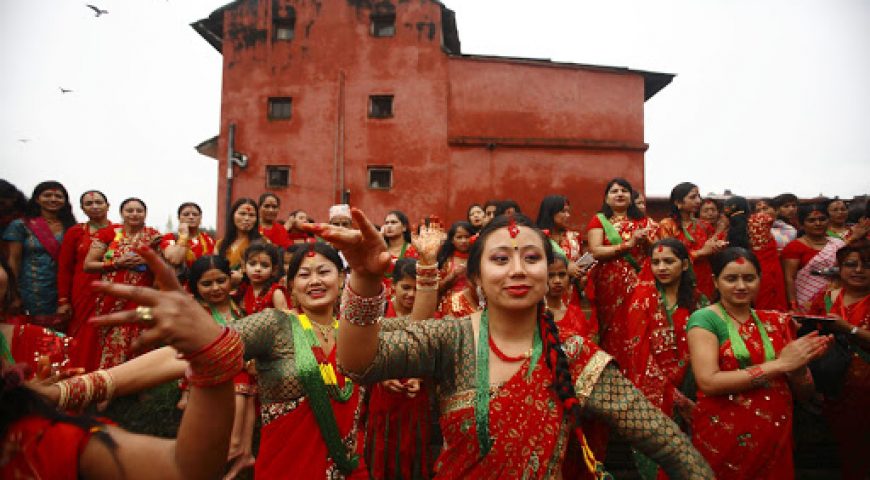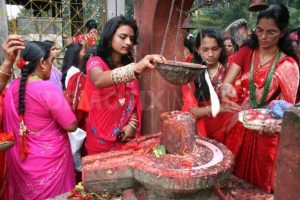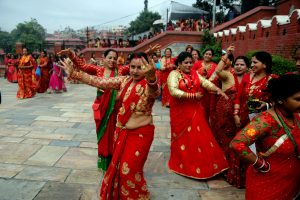
Teej Festival
Teej is celebrated by Nepalese Hindu women, who fast, worship Lord Shiva, and perform different musical activities all over the country. Only females receive a public holiday for this festival.
Teej festival is celebrated for the well being of spouse, children, and purification of one’s body and soul. This festival contains three days long celebration which combines sumptuous feasts as well as rigid fasting. It is celebrated in the long life of her husband as well as long term relationship between them in the present and the life to come. The folk music, dances and women’s with red clothes, add more flavor to traditional values of Teej. Most of the Nepali Hindu women sing dance in the street and also visit the temples in a fasting mood.
First Day: Dar Khane Din
Teej takes place sometime in August or September, depending on the year. The exact date of the festival is based on the Hindu calendar, so it changes from year to year. The festival lasts for three days. In Nepal, the first day of the festival is known as “Dar Khane Din.” On this day, women dress up and go out into the streets to celebrate. There are dancing, singing and lots of food available until midnight — and then fasting starts.
Second Day: The Fasting Day
On the second day of the festival, women head to the Pashupatinath temple three miles outside Kathmandu. Pashupatinath is among the most sacred Hindu temples in the world, and the temple is a UNESCO World Cultural Heritage site. The women make offerings of fruits and flowers at the temple. They also light an oil lamp, which must be kept on throughout the night as a symbol of good omens and blessings to come.
Third-Day: Ganesh Chaturthi
On this day, women wake up early in the morning, take a bath and worship the oil lamp and Goddess Parvati before consuming any solid food.

Fourth Day: Rishi Panchami
The last day of the festival is a day of cleansing called the “Rishi Panchami.” This is the day to wash off all impurities to mark the end of Teej. In Nepal, women take baths in the Bagmati River, using the leaves and roots of the datiwan bush to help with the cleansing and to brush the skin. After the ritual bath, women are considered purified of all sins and they can return to their families cleansed.
When Teej is Celebrated?
According to the Nepali calendar, the Teej festival falls on the 3rd day of Bhadra Shukla Pakshya i.e. late August or early September.

Key Facts about Teej Festival
- Married women observe Teej fasting for their husband’s longevity, children’s well-being, family happiness as well as peace and prosperity.
- Unmarried girls and women observe Teej fast to be blessed by Goddess Parvati to get a good husband.
- Both married and unmarried celebrate Teej as it is a way to gather together, sing, dance, and share their feelings.
- Also, women celebrate Teej to purify their body and soul by performing Puja and singing devotional songs.
